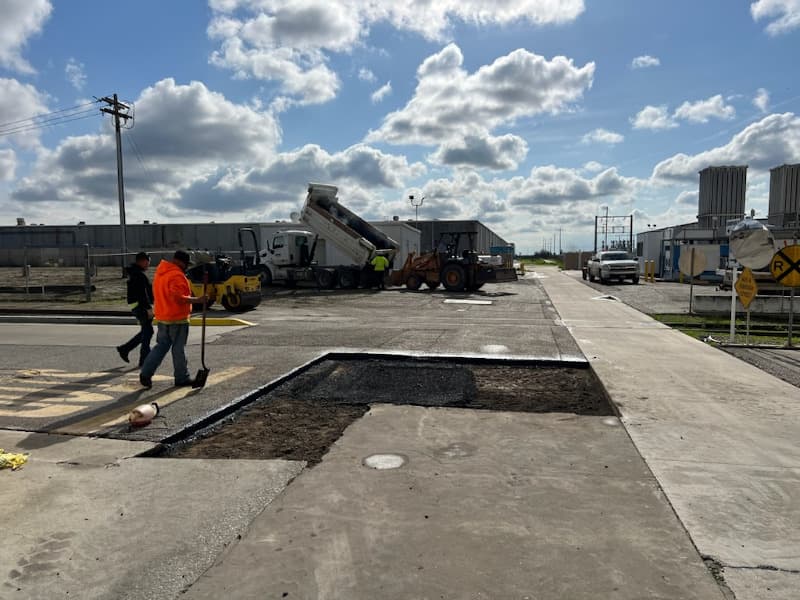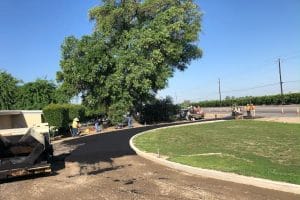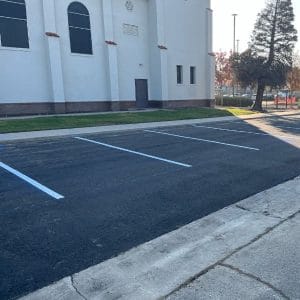
Asphalt is one of the most common materials used for paving roads, driveways, and parking lots. It’s strong, durable, and cost-effective, but it has problems. From cracks to potholes to crumbling edges, asphalt can sometimes be more trouble than it’s worth. This article will explore some of the most common asphalt problems you may encounter and provide tips on addressing them.
Asphalt problems come in all shapes and sizes, from small cracks to major structural damage. Unfortunately, they’re often hard to spot until they’ve caused serious issues – which means you could have a problem that needs fixing before it becomes visible. Whether you’ve noticed something amiss or want to get ahead of any potential issues, this article will help you identify and understand the most common asphalt problems so you can take action sooner rather than later.
No matter how carefully maintained your asphalt surface is, there’s always a chance that something could go wrong. Don’t wait until it’s too late – read on to discover what to look out for and how best to tackle any asphalt troubles that come your way!
Cracking And Potholes
Unfortunately, asphalt is prone to cracking and potholes. Cracking can occur due to various factors such as weather, vehicle weight, and even improper installation. It appears as lines or fissures in the pavement surface. It is unsightly and can lead to further deterioration of the asphalt and even cause water damage beneath the surface.
Potholes are created when water seeps into the base. This process causes chunks of the surface to break off and form holes. As with cracking, potholes can cause further damage if left unaddressed. They should be filled promptly with new material designed specifically for this purpose. Proper pothole repair and vigilance are key for avoiding these common asphalt problems.
Alligatoring Cracking
Alligatoring is a common asphalt problem that happens when the top layer of asphalt develops deep cracks. This type of cracking can occur for a number of reasons, including poor surface preparation and inadequate asphalt application. The main reason is improper to the base installation.
Quality materials and proper installation techniques are the best way to prevent alligatoring. Additionally, use an appropriate thickness when laying down the asphalt so that it can withstand heavy traffic and wear and tear over time. Regular maintenance is also key; make sure you sealcoat your parking lot every few years to keep it looking its best and prevent further deterioration due to alligatoring.
Bleeding And Flushing
Moving on from alligatoring, let’s look at two other common asphalt problems: bleeding and flushing. These issues are usually found in areas with a lot of vehicular traffic. Bleeding is when the asphalt binder migrates to the surface, creating a shiny, slick look. Flushing is when the asphalt binder softens and begins to break up due to excess moisture. It often looks like a thin layer of mud or water is on top of the pavement.
It’s like a cake that hasn’t been cooked properly – it may look okay on the outside, but inside it’s still wet and gooey. It’s important to understand that it’s not just the appearance of these problems that causes them to be dangerous; they can also cause hydroplaning and other hazardous driving conditions if left unchecked.
In terms of preventing bleeding and flushing, there are several things you can do:
- Make sure that your pavement has proper drainage structures in place so excess moisture is directed away from your asphalt surface.
- Ensure that your pavement has an adequate aggregate thickness so it doesn’t become too soft in wet weather conditions.
- Regularly inspect your pavement for signs of bleeding or flushing and take corrective action as soon as possible if any issues are spotted.
Ruts And Depressions
Ruts and depressions are some of the most common issues with asphalt pavement. Ruts happen when vehicles drive over the same area for an extended period. The vehicle’s weight causes the ground beneath to sink, creating a rut in the asphalt. Depressions form when water accumulates in low spots on the pavement, causing it to break down and erode into a depression. Both of these issues must be addressed before they become larger problems requiring more costly repair work.
Corrugation or Washboarding
Corrugation is a common problem in asphalt, and it can be likened to wrinkles on an old person’s face. This form of asphalt distortion occurs when the underlying layers of the pavement are not correctly sealed or compacted. It can lead to water pooling, cracking, and overall weakened pavement structure. Corrugation often appears as a wave-like pattern across the pavement surface.
Raveling And Striping
Moving on, two other common asphalt problems are raveling and striping. Raveling occurs when the aggregate particles of asphalt start to loosen and break away from the asphalt surface. This often happens as a result of too much moisture or traffic wear. Striping is also a sign of pavement deterioration since it indicates that the binder between the asphalt layers has become weak.
Here are three telltale signs of raveling and striping:
- Visible cracks in the pavement surface
- Loose aggregate particles scattered across the road
- Loss of pavement color due to oxidation from UV rays
Edge Breaks
Edge breaks are an all-too-common asphalt problem. They occur when the edges of asphalt pavement undergo stress, usually due to poor construction or inadequate maintenance. Edge breaks lead to cracking, crumbling, and other surface damage, which can cause further deterioration if left unchecked.
-Replace any damaged areas as soon as possible to avoid further issues down the road
It’s important to keep an eye on your asphalt and take action when necessary. Proactive maintenance is key to avoiding costly repairs and extending the lifespan of your asphalt. With regular inspection and preventive measures, you can ensure that your asphalt remains in top condition.
To sum it up, being aware of common asphalt problems and taking steps to address them is essential for preserving the longevity of your pavement. By inspecting your asphalt regularly, staying up-to-date on affordable repair solutions, and engaging in preventive measures, you can save yourself time and money in the long run. Plus, you’ll be doing your part for the environment by keeping potential pollutants out of the air and water. So don’t wait until it’s too late – take care of your asphalt today or contact a paving company like us to manage the problems for you.



